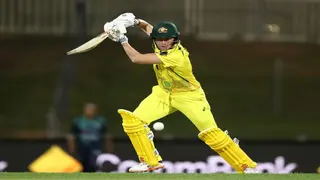Ranked! Top 10 most dangerous sports to play at the moment
Other Sports
Have you ever wondered why tennis balls are pressurised and packaged in cans? The answer lies in the unique characteristics that the pressurised balls have and the need to maintain their performance until they reach the hands of eager players.

Tennis, a sport enjoyed by millions worldwide, relies heavily on one essential element—the tennis ball. These seemingly simple spherical objects play a crucial role in the game, allowing players to control and manipulate their shots.
It helps to optimise their performance and deliver specific playing characteristics that recreational and professional players desire. The secret behind the pressurisation lies within their hollow core.
Manufacturers ensure they are more compression-resistant by filling the core with air. As a result, when a player strikes, it quickly regains its shape, producing a lively bounce off the ground or racket.
This increased bounce enhances the gameplay, allowing for greater control, spin, and speed. These tennis balls offer a thrilling and engaging experience on the court, making them the preferred choice for competitive play and high-level tournaments. However, it is essential to note that the pressurisation process also means they have a finite lifespan, gradually losing their internal air pressure over time.
Ranked! Top 10 most dangerous sports to play at the moment
Other Sports

They are pressurised and sealed in airtight tubes to maintain optimal performance until they are ready for use. New balls are sold in pressurised containers to guarantee their pristine condition and optimal bounce when first used.
The tubes are protective containers that store air and prevent it from escaping the balls during storage and transportation. When the can is opened, the balls release the air inside, indicating that they are ready for play.
The packaging in pressurised tubes ensures that the tennis balls remain firm and bouncy, offering players the best possible experience from the moment they hit the court. Especially crucial for the new ones, they are kept in pressurised cans as they need to maintain their state to deliver the desired characteristics, such as enhanced bounce and responsiveness.
Basketball referee signals: Understanding the different hand signals NBA referees use
NBA

They are used primarily for practice sessions, training, and drills. The pressureless ones do not rely on internal air pressure for their bounce and performance, unlike the pressurised ones. Instead, they have a thicker and harder rubber core, providing a consistent and durable bounce over an extended period.
Pressureless balls are excellent for players seeking reliable and long-lasting balls for practice and coaching. Their sturdy construction makes them ideal for ball machines and lessons, where frequent replacements are less desirable.
Pressureless balls are also often recommended for dogs, as they do not rely on internal air pressure. Dogs have a strong bite force, and the pressure inside pressurised balls can lead to a sudden burst if punctured or bitten too hard. Thus, they can withstand rough play and remain durable for longer.
The bright yellow colour of tennis balls is not merely an aesthetic choice but serves a practical purpose in the sport. They were traditionally white, but their visibility on television broadcasts became an issue. As a result, the International Tennis Federation (ITF) introduced the yellow colour in the early 1970s to improve visibility for players, spectators, and viewers.
What does a small forward do in basketball? The main roles of a SF explained
NBA
The bright yellow hue enhances contrast against different court surfaces, making it easier for players to track the ball during fast-paced matches. Today, the majority of them used in professional and recreational play are yellow, ensuring a better playing experience for everyone involved.

The lifespan of a tennis ball depends on various factors, such as the frequency of use, court surface, and playing conditions. Pressurised ones generally perform optimally for about 1-4 weeks of regular play. After this period, they gradually lose their internal air pressure, reducing bounce and responsiveness.
For high-level players and competitive matches, they are often changed every 7-9 games to ensure consistent performance. On the other hand, pressureless ones have a longer lifespan and can last for months before showing signs of wear.
The distinct smell comes from the materials used in their construction. Tennis balls are made of rubber and felt, and manufacturing involves treating the materials with specific chemicals.
How many sports are there in the world? A list of all sports and games
Other Sports
The rubber in them contains sulfur-based compounds, contributing to the characteristic smell. Additionally, the felt covering of the ball is treated with a mixture of adhesives and dyes, further adding to the pleasant aroma. The combination of these elements gives tennis balls their unique and nostalgic scent, loved by players and enthusiasts worldwide.

The production of tennis balls involves a carefully orchestrated process that combines various materials and precision manufacturing techniques. The primary materials used are rubber and felt, and the manufacturing process is as follows:
Indoor sports: A list of the best indoor sports and games in the world
Other Sports
By sealing them in pressurised tubes and cans, manufacturers ensure their optimal performance until they reach the hands of eager players. Whether you are a seasoned pro or a casual enthusiast, the pressurisation and packaging of tennis balls ensure that every stroke and every match is filled with the thrill and excitement that this beloved sport offers.
READ ALSO: Which are the best tennis courts in the world currently?
Sports Brief published an article about the best tennis courts in the world currently. Tennis is one of the sports that has grown significantly in popularity around the world, and because of this, some of the best tennis courts have been built.
Most fans, however, tend to concentrate more on the players and frequently forget the amazing grounds where these players play their games. Click on the above link to read more!